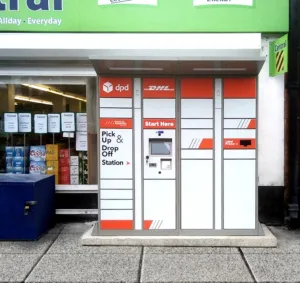By Adam French, Regional Vice President EMEA, TrafficGuard
Mobile apps are transforming the way customers shop, and in 2021 gross consumer mobile app spending amounted to $170 billion globally, according to Statista. Apps are becoming better equipped for spontaneous purchases and internal payments and have quickly become a key channel for retailers to increase sales.
This creates an exciting opportunity for ecommerce advertisers leveraging their own branded apps for tailored customer engagement and activation outside the traditional digital channels such as search. The global in-app purchasing market size is projected to reach $340.76 billion by 2027, according to Allied Market Research. In-app purchasing is outpacing in-app advertising in terms of revenue opportunity growth, meaning retailers need to focus on increasing downloads and user acquisition in order to make the most profit. They can make a significant amount of money solely from this channel and capitalise on the demand for in-app shopping capabilities.
However, according to Juniper Research, digital advertising losses to fraud will reach $112.6 billion by 2026, and the new year’s sales splurging creates significantly more fraudulent opportunities. Unfortunately for marketers, fraudsters follow the money, and the more that’s being spent, the more that’s being stolen.
In 2023, retailers will face rising operational costs and decreasing consumer confidence as prices surge and recession hits. As shoppers feel the economical pinch, they’ll have to make stricter decisions about where their money goes, and maximising marketing campaigns will become more important than ever.
Retailers must increase their share of voice against competitors or risk losing out on potential sales. By filtering out invalid traffic and fraud, businesses can reduce the impact it has on their budgets, stay one step ahead of the fraudsters and reach prospective shoppers.
The Outlook for ecommerce
With retail mobile-commerce sales hitting $359.32 billion in 2021, and projected to almost double by 2025, targeting mobile users to increase sales is a profitable idea. Push notifications ensure retailers can quickly create top-of-mind awareness to millions of mobile users simultaneously and once in the app, personalised experiences and smooth mobile payments make in-app purchasing simple.
However, virtually every retailer driving shoppers to their mobile app is at risk of ad fraud. According to data from 2021, 7% of app installations on iOS devices and 12% on Android were non-human. In the same year, there was a 20% post-installation fraud rate from Apple’s app marketplace, leading to it removing 170 million fraudulent accounts.
Retailers need millions of ad impressions and downloads to increase their conversion rate to paying customers, but when a large portion of this engagement is invalid, the actual rate is limited. Money is spent targeting these bots using advertising, but if they will never convert into paying customers, this results in marketing budget being completely wasted. If that invalid and fraudulent traffic was identified and filtered out early on, retailers would only need to pay for legitimate potential buyers and user acquisition would quickly be increased.
Gaining More Insight
Losses to ad fraud can be reduced, although not completely avoided with better awareness. Advertisers can watch out for sudden and unexpected increases in engagement paired with a low conversion rate, and irregular user behaviour which may signal fraudulent activity. However, for total eradication and maximised savings, a more intelligent approach must be taken that goes beyond what the human eye can spot.
I recently witnessed an ecommerce company promoting its mobile app suffer from 308 thousand invalid installs of its app, roughly 40% of its total installs over just two weeks. These invalid installs resulted in a huge 61 million invalid events post-attribution, meaning the wrong partners were being paid and the wrong areas of the campaign were being optimised with more investment. Had this retailer had better, more sophisticated visibility, it would have spotted that the traffic was invalid before it entered the attribution pool and the company paid out.
Accurate performance data on the effectiveness of each advertising campaign is critical for ecommerce brands as it impacts so many other areas of the business, from the procurement team to the merchandising team.
A preventative approach to addressing invalid and fraudulent traffic is therefore required so that muddied data never gets the opportunity to affect data, operations or marketing budget. Real-time fraud prevention using intelligent technology such as machine learning means faster optimisation decisions can be made to boost sales and everyone can access accurate data when needed.
Freezing Out Ad Fraud
From seasonal sales to new year launches, the winter months are an exciting and lucrative time for ecommerce brands selling on mobile apps. Scan-and-go shopping and AI-driven product testing capabilities mean mobile commerce is becoming ever more central to a digital shopping experience and retailers need to set themselves up for the best chances of success.
As online retailers experience a flurry of app traffic to their post-holiday sales over the coming weeks, is crucial they eradicate mobile ad fraud to ensure KPIs are met and budgets are optimised. While retailers should be taking their own steps to tackle the challenge, cleaner data, increased transparency and pre-bid technology combined will provide the maximised opportunity to start the new year off successfully.







